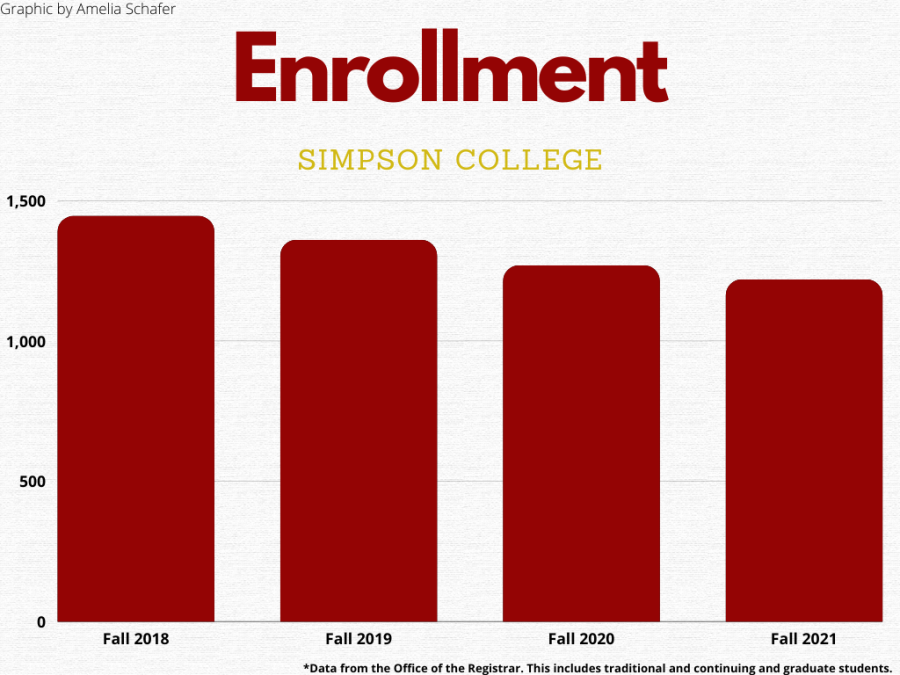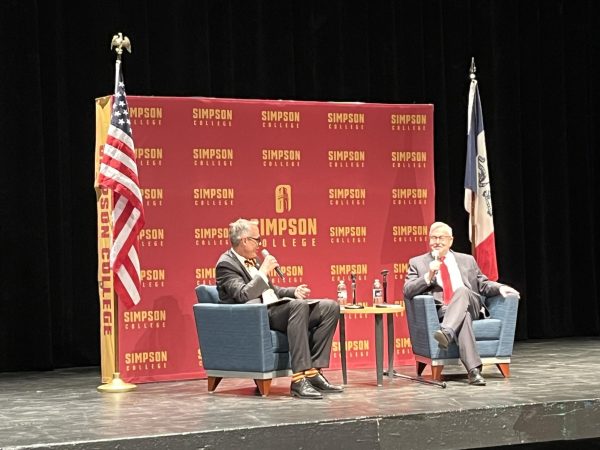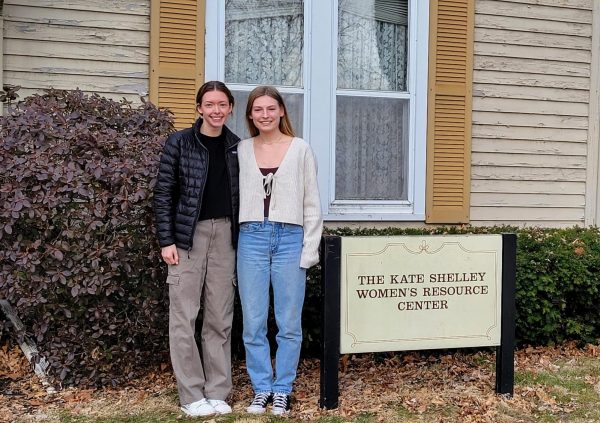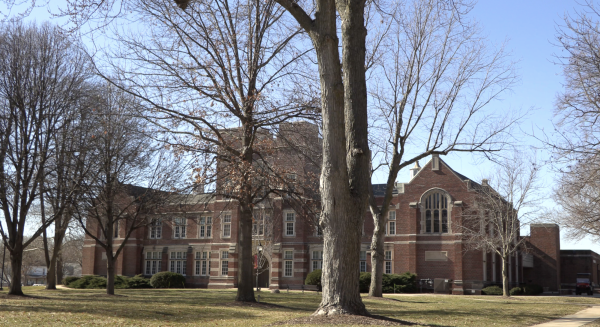Strategic enrollment plan hopes to end the decrease in students at Simpson
Enrollment has declined over the past four years. From 1444 in Fall 2018 to 1218 in Fall 2021.
March 2, 2022
Student enrollment numbers have dropped at nearly all colleges across the United States since the pandemic began in 2019, but this decrease in enrollment at Simpson College did not only occur when the pandemic hit.
When looking at enrollment totals for undergraduate and graduate students, Simpson experienced a boom in enrollment. In 2010-2011, there were 2,015 students enrolled. Then, for the 2011-2012 academic year, these numbers began to decline, leaving 1,866. Then again, for the 2012-2013 school year, there was a minor decline with 1,844 students enrolled.
Over the past decade, the numbers have declined consistently, leading to approximately 1,225 students enrolled in the 2020-2021 school year, and 1,218 for the 2021-2022 semester, according to data from the Office of the Registrar.
According to Vice President for Enrollment Leigh Mlodzik, a combination of smaller entering classes and fewer students returning to campus are contributing to the drop in enrollment.
“Schools across the country have been fighting an uphill battle against declining demographics with fewer high school students graduating and a college experience that no one anticipated given the disruption of COVID over the past two years,” Mlodzik said.
Mlodzik knows that Simpson is not the only college seeing this trend, and it is a major concern for all colleges and universities.
“According to the National Student Clearinghouse, undergraduate enrollment fell 3.1% in the fall of 2021, which has contributed to an overall drop of 6.6% since the fall of 2019,” Mlodzik said. “This percentage drop equates to over a million students from across the country,”
Even with the significant decline in enrollments, Mlodzik is excited about Simpson’s future and believes they can get a high number of students back on campus.
“Recruitment and retention are at the core of the strategic plan, and there is a great deal of momentum in these areas,” Mlodzik said. “There has been a focus on investing in new programs and initiatives that will have both immediate and long-term positive impacts on the overall enrollment at the college.”
This new enrollment strategic plan will build on successful strategies that have been in place while exploring new growth opportunities. Hopefully, with this new plan solely focused on recruitment and retention efforts, Simpson will begin to see an increase in students.
With Simpson being a relatively small private college, a decrease in enrollment impacts generated revenue and affects expenses incurred due to fewer students. Even though Simpson runs on student enrollment, it does not mean that tuition necessarily needs to increase if the decrease in enrollment continues.
“There are several factors that are taken into consideration by our Board of Trustees when tuition and fees are set each year,” Mlodzik said. “While a decrease in enrollment is not the deciding factor, the impact that fee increases have on both recruitment and retention is important to balance with the rising costs of operating a college.”

















